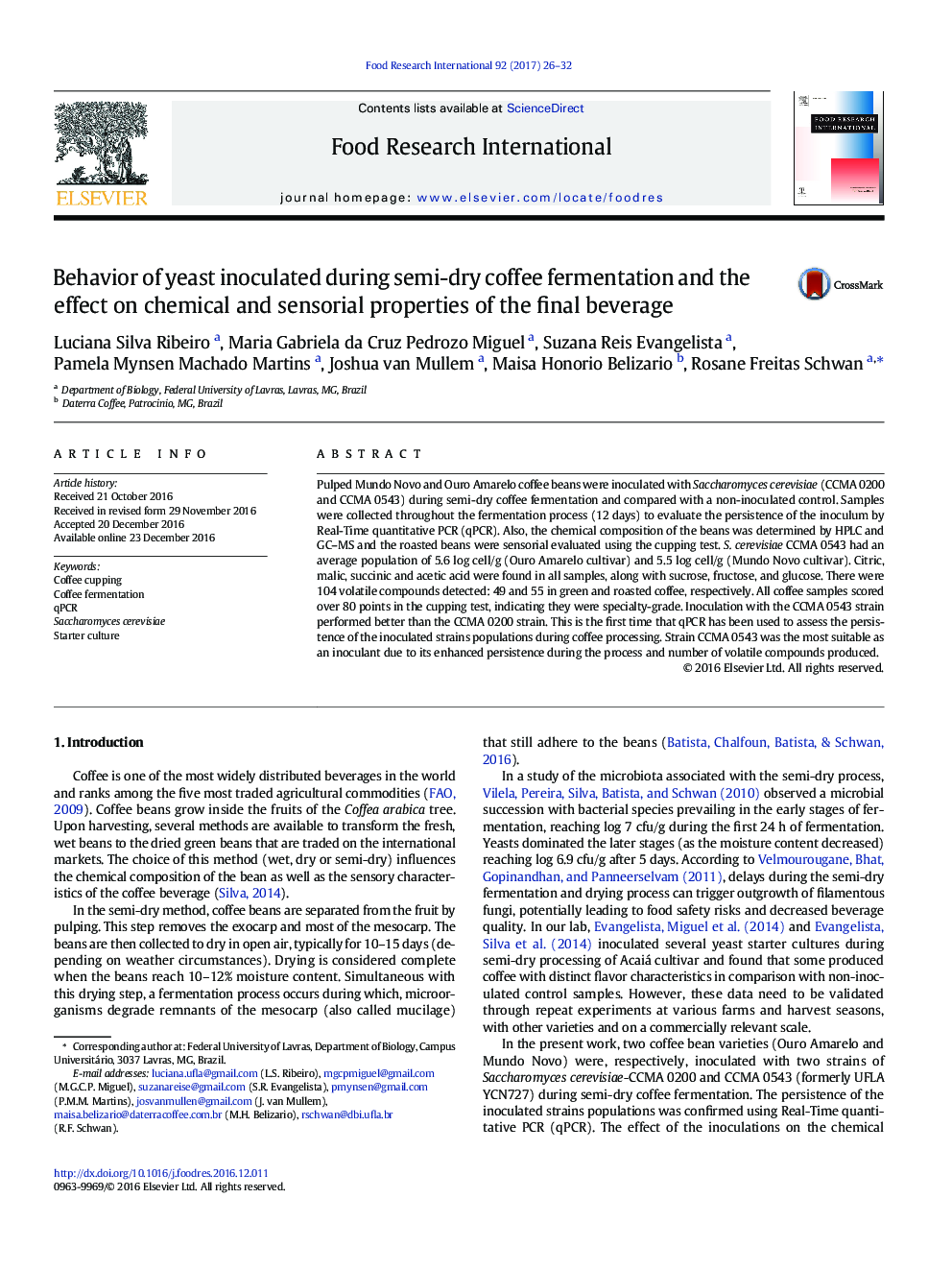| Article ID | Journal | Published Year | Pages | File Type |
|---|---|---|---|---|
| 5768303 | Food Research International | 2017 | 7 Pages |
Highlightâ¢Yeast isolated from coffee persisted while the one isolated from sugarcane did not.â¢The yeasts influenced the carbohydrate composition of the green coffee bean.â¢CCMA 0543 was the most suitable for use as coffee inoculant.â¢There is a specificity of yeast related to coffee variety.
Pulped Mundo Novo and Ouro Amarelo coffee beans were inoculated with Saccharomyces cerevisiae (CCMA 0200 and CCMA 0543) during semi-dry coffee fermentation and compared with a non-inoculated control. Samples were collected throughout the fermentation process (12 days) to evaluate the persistence of the inoculum by Real-Time quantitative PCR (qPCR). Also, the chemical composition of the beans was determined by HPLC and GC-MS and the roasted beans were sensorial evaluated using the cupping test. S. cerevisiae CCMA 0543 had an average population of 5.6 log cell/g (Ouro Amarelo cultivar) and 5.5 log cell/g (Mundo Novo cultivar). Citric, malic, succinic and acetic acid were found in all samples, along with sucrose, fructose, and glucose. There were 104 volatile compounds detected: 49 and 55 in green and roasted coffee, respectively. All coffee samples scored over 80 points in the cupping test, indicating they were specialty-grade. Inoculation with the CCMA 0543 strain performed better than the CCMA 0200 strain. This is the first time that qPCR has been used to assess the persistence of the inoculated strains populations during coffee processing. Strain CCMA 0543 was the most suitable as an inoculant due to its enhanced persistence during the process and number of volatile compounds produced.
Graphical abstractDownload high-res image (215KB)Download full-size image
